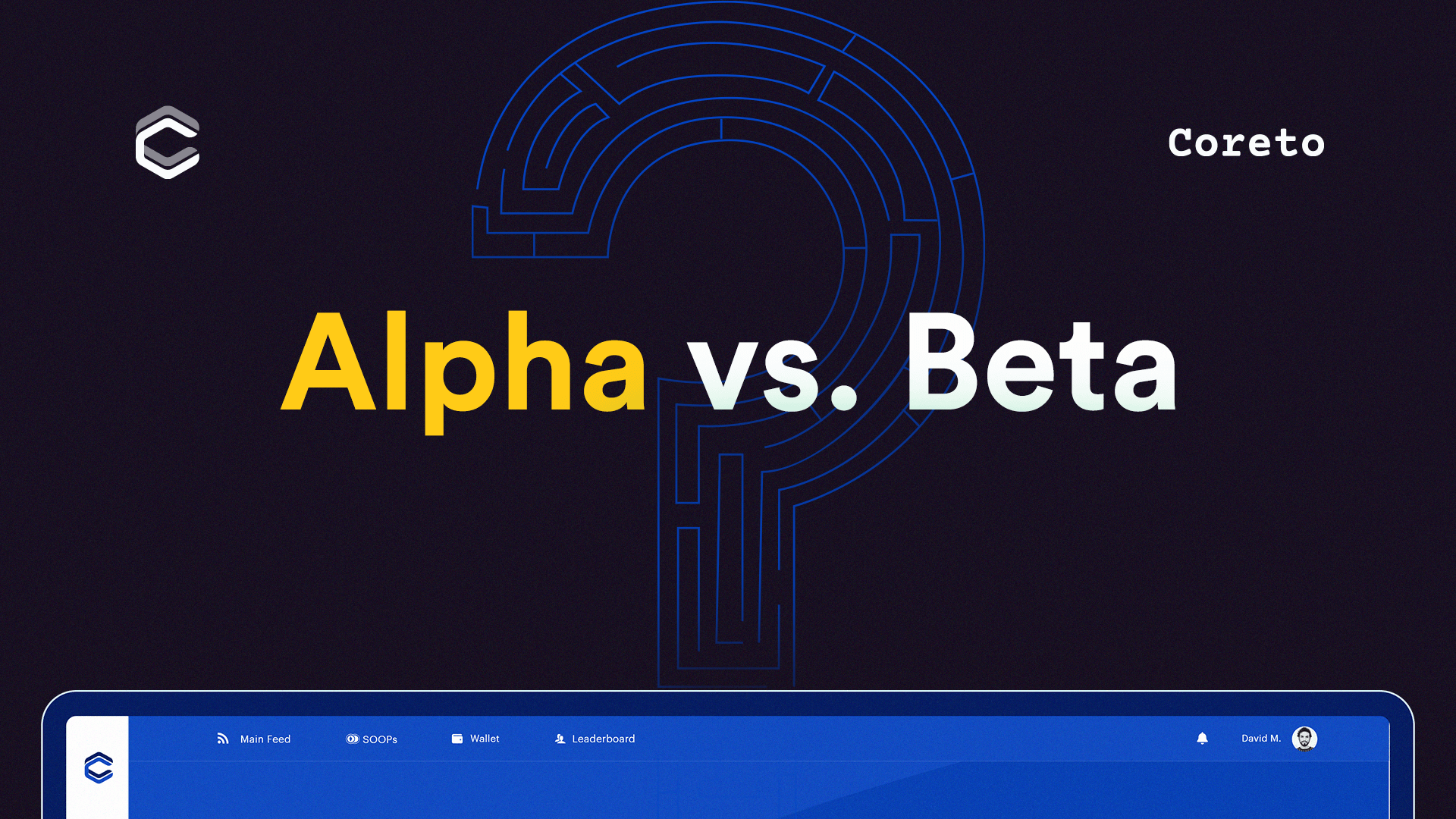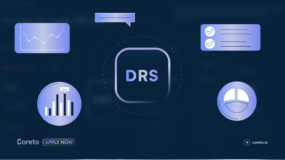
Alpha vs Beta success rate
Although they both rely on feedback from real users and different teams, they are driven by different processes, strategies, and goals. Together, these two types of tests increase the success rate and service life of the product in the market.
The ALPHA version
Alpha is an experimental stage. This is an opportunity to check if you are building the right thing before continuing and starting to provide effective services.
We are here — Coreto ALPHA version. Our trust and performance algorithms are fine-tuned and tested by a limited number of real users at this point. These results will be packed in an improved User Interface and create a new generation of content creators.
What it’s not:
Alpha is not about building a runnable service. It should not be seen as the “first stage” of building Beta.
“Alpha is the development phase that comes after discovery”, as described by the GDS Service Design Manual.
Alpha vs Beta – priorities
Alpha testing is an acceptance test; it is performed before the final product is released to the end-user to identify all possible problems and errors. It is generally performed by testers or employees within the organization. The main goal is to identify and test the tasks that a typical user might perform. In short, this kind of testing is called alpha only because it is done early in the software development, and before the beta testing. The main focus of the alpha test is to simulate real users through the use of black box and white box technology.
This phase mainly focuses on identifying
- stopper bugs/major bugs
- usability issues
- feature gaps, and
- compatibility issues.
The BETA version
This is the final testing phase, following a complete internal Alpha testing cycle. The company releases the software to some external user groups other than the company’s testing team or employees. This initial software version is called the Beta version.
The Beta test group can be selected according to the needs of the company. The company can invite a small number of users to test the preview version of the application, or it can publicly release it for any user to try. Fixing issues in the Beta version can greatly reduce development costs because most minor issues will be resolved before the final version.
Alpha vs Beta — a better understanding
A: First phase of tests.
B: Second phase of tests.
A: The test is made in the developer’s environment. Therefore, activities can be controlled.
B: The test is made in the real environment, and therefore activities cannot be controlled.
A: Only functionality, usability are tested. Reliability and Security testing are not usually performed in-depth.
B: Functionality, Usability, Reliability, Security testing are all given equal importance to be performed.
A: System Testing is performed before Alpha Testing.
B: Alpha Testing is performed before Beta Testing.
A: Issues / Bugs are logged into the identified tool directly and are fixed by the developer at high priority.
B: Issues / Bugs are collected from real users in the form of suggestions/feedback and are considered as improvements for future releases.
A: Test goals — to evaluate the quality of the product; to ensure Beta readiness; to focus on finding bugs; to verify if the product works.
B: Test goals — to evaluate user satisfaction; to ensure release readiness (for product launch); to focus on collecting feedback/suggestions; to determine if the user likes the product.
A: Test duration — many test cycles; each test cycle lasts 1–2 weeks; depends on the number of bugs found and a number of new features added.
B: Test duration — 1–2 test cycles; each cycle lasts 4–6 weeks.
A: Expectations — acceptable number of errors that were missed in earlier test activities.
B: Expectations — a major completed product with significantly fewer errors and crashes.
Alpha and Beta testing are similarly significant in any organization and both play a major part in the development of a product.
Alpha vs Beta phases
While Alpha is an exploratory phase, Beta means the features of the product have been locked down and are under development.




